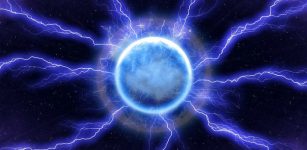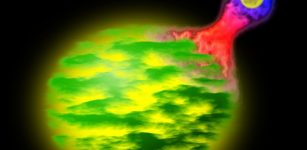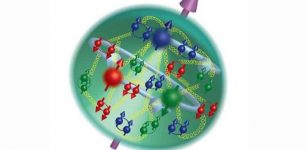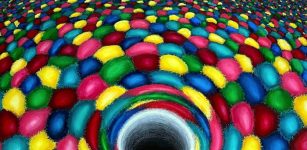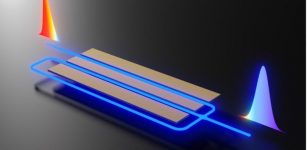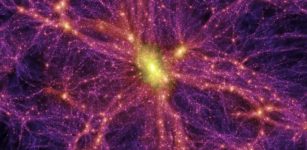Electron Spin Successfully Measured For The First Time
Eddie Gonzales Jr. – MessageToEagle.com – For the first time, researchers successfully measured the electron spin in matter—i.e., the curvature of space in which electrons live and move—within “kagome materials,” a new class of quantum materials.
Three perspectives of the surface on which the electrons move. On the left, the experimental result, in the center and on the right the theoretical modeling. The red and blue colors represent a measure of the speed of the electrons. Both theory and experiment reflect the symmetry of the crystal, very similar to the texture of traditional Japanese “kagome” baskets. Credit: University of Bologna
The results obtained—published in Nature Physics—could revolutionize the way quantum materials are studied in the future, opening the door to new developments in quantum technologies, with possible applications in a variety of technological fields, from renewable energy to biomedicine, from electronics to quantum computers.
Success was achieved by an international collaboration of scientists, in which Domenico Di Sante, professor at the Department of Physics and Astronomy “Augusto Righi,” participated for the University of Bologna as part of his Marie Curie BITMAP research project. He was joined by colleagues from CNR-IOM Trieste, Ca’ Foscari University of Venice, University of Milan, University of Würzburg (Germany), University of St. Andrews (UK), Boston College, and University of Santa Barbara (U.S.).
Through advanced experimental techniques, using light generated by a particle accelerator, the Synchrotron, and thanks to modern techniques for modeling the behavior of matter, the scholars were able to measure electron spin for the first time, related to the concept of topology.
“If we take two objects such as a football and a doughnut, we notice that their specific shapes determine different topological properties, for example because the doughnut has a hole, while the football does not,” Domenico Di Sante explains. “Similarly, the behavior of electrons in materials is influenced by certain quantum properties that determine their spinning in the matter in which they are found, similar to how the trajectory of light in the universe is modified by the presence of stars, black holes, dark matter, and dark energy, which bend time and space.”
Although this characteristic of electrons has been known for many years, no one had until now been able to measure this “topological spin” directly. To achieve this, the researchers exploited a particular effect known as “circular dichroism”: a special experimental technique that can only be used with a synchrotron source, which exploits the ability of materials to absorb light differently depending on their polarization.
Scholars have especially focused on “kagome materials,” a class of quantum materials that owe their name to their resemblance to the weave of interwoven bamboo threads that make up a traditional Japanese basket (called, indeed, “kagome”). These materials are revolutionizing quantum physics, and the results obtained could help us learn more about their special magnetic, topological, and superconducting properties.
“These important results were possible thanks to a strong synergy between experimental practice and theoretical analysis,” adds Di Sante. “The team’s theoretical researchers employed sophisticated quantum simulations, only possible with the use of powerful supercomputers, and in this way guided their experimental colleagues to the specific area of the material where the circular dichroism effect could be measured.”
Written by Eddie Gonzales Jr. MessageToEagle.com Staff



